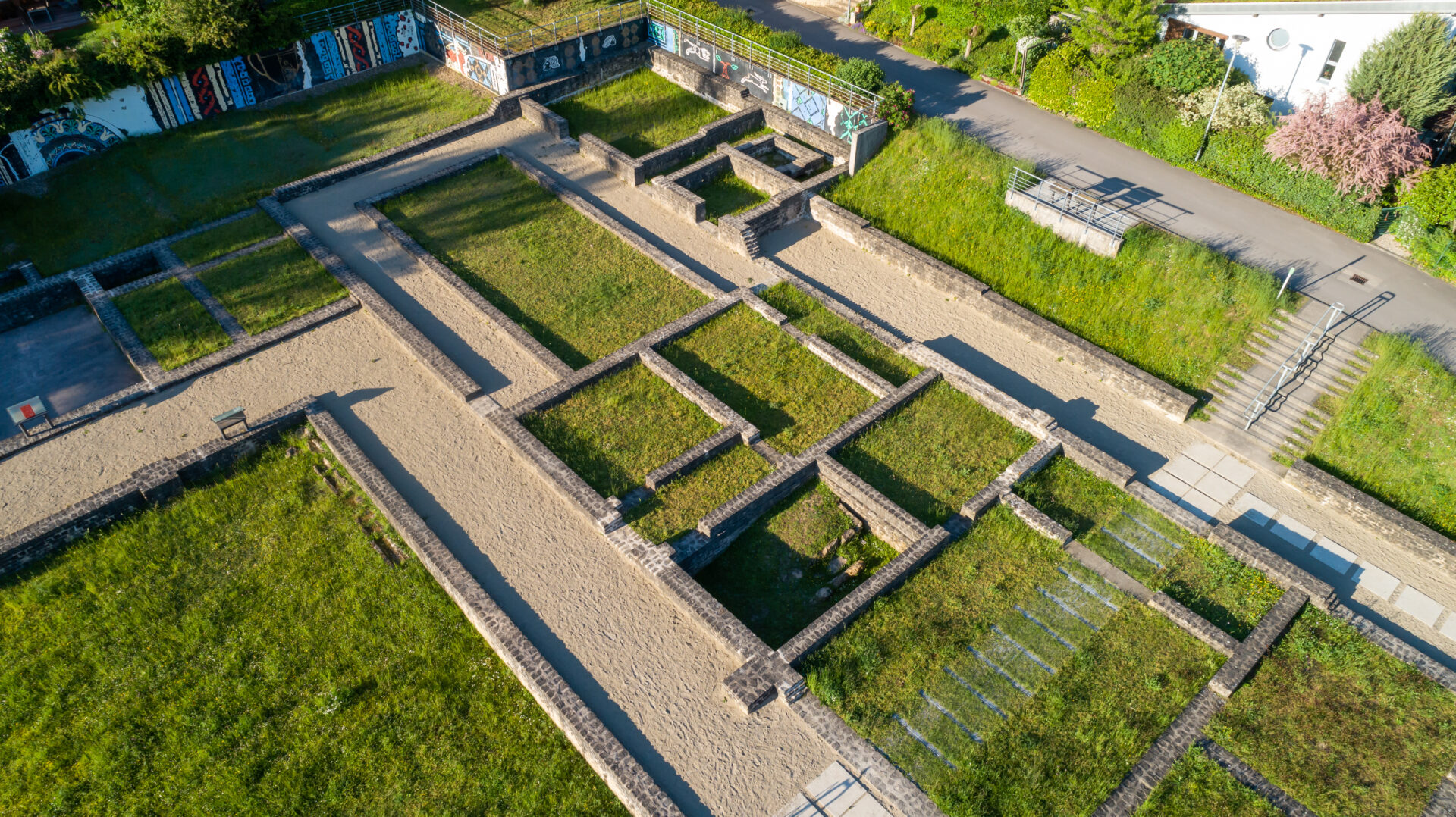Roman Villa

The archaeological site at the foot of the “Sonnebierg” in Helmsange was only recognised in its full extent and significance in the years 1990-1994.
The start of the archaeological research coincided with the start of the preparatory work for the realisation of an ecological housing estate by the Housing Fund.
With a total length of almost 100 metres and a width of more than 50 metres, and with almost 50 different rooms on the ground floor alone, the residence of the Roman villa in Helmsange is a real palace. It is one of a small group of luxury villas in the area. (see map)
The architectural plan of the Helmsange residence corresponds to the common type of Roman dwelling houses in our region, the villa with portico and projecting side wings. The building was occupied for more than three centuries (it was built in the middle of the 1st century) and has been transformed several times.
In addition to a large number of hairpins and various glass necklace beads, the archaeological rarities include a number of bronze rings, including one piece with a name, and about 25 fibulae, some of which are decorated with beautiful enamel inlays. An extraordinary piece is a very beautiful bronze phalanx with a carefully modelled lion’s head.
The excavation yielded more than 400 Roman coins, including a scattered purse of more than 150 coins from the period 260 to 280 AD.
As usual in the excavation of a Roman site, pottery constitutes the major part of the material found. Virtually all types and forms of Roman pottery from the 1st to the 4th century are represented.
One particular feature distinguishes the site at Helmsange from other similar villas. This is the particularly high number of objects belonging to a religious or cult context. The most remarkable piece of this group of objects is a limestone carving, the lower part of a very beautiful stele of deities, probably from the 1st century AD.